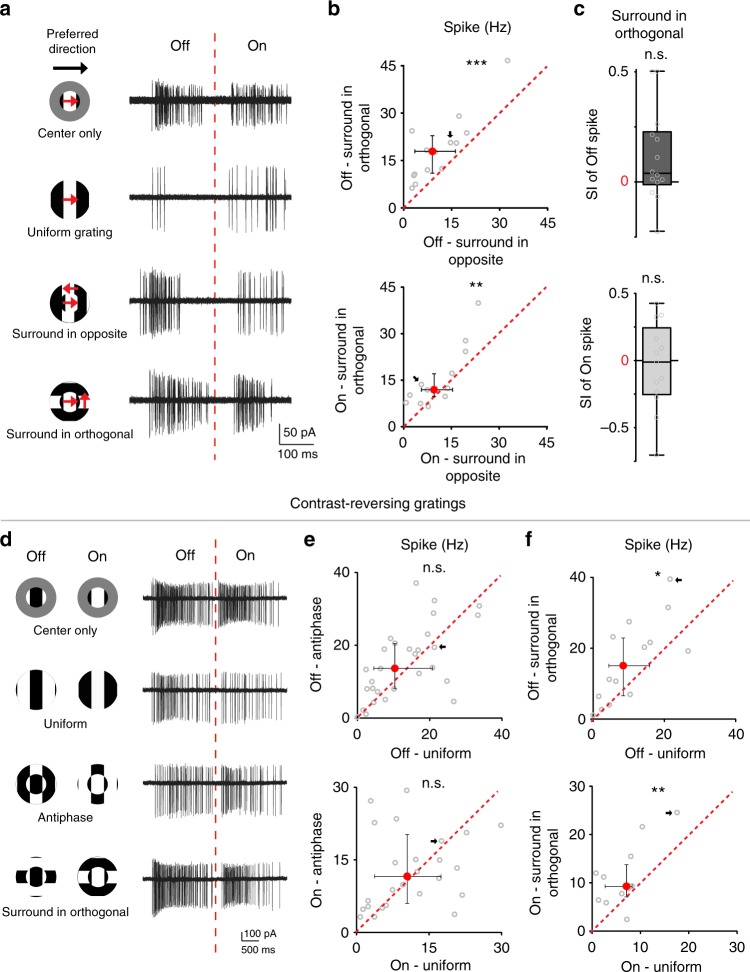Fig. 9.
Contextual modulation of pDSGCs is sensitive to the relative orientation of center and surround contours. a Example spike traces of a pDSGC from a control mouse evoked by the visual stimuli shown on the left. The red dashed line shows the boundary of the Off and On responses. b Comparison of pDSGC firing rate during surround-in-orthogonal versus surround-in-opposite gratings, pairwise comparison was performed using Wilcoxon signed-rank test. Off response: n = 14 cells from 8 mice, ***p < 0.001; On response: n = 13 cells from 7 mice, **p = 0.0081. c Upper panel: SI of Off spike during surround-in-orthogonal: Wilcoxon signed-rank test was used to test whether the SI of surround-in-orthogonal is significantly higher than 0: p = 0.091. Lower panel: SI of On spike during surround-in-orthogonal: p = 0.32. The same sample groups as Fig. 8b. d-f Loose-patch recording of pDSGC under contrast-reversing stationary gratings. d Left: Schematics show the contrast-reversing stationary grating stimuli. Right: Spiking responses of an example pDSGC from a control mouse. Red dashed line labels the boundary of Off and On spiking. e Scatter plots compare pDSGC spike firing rate during uniform contrast-reversing gratings and antiphase contrast-reversing gratings. Off response: n = 29 cells from 7 mice, p = 0.14; On response: n = 26 cells from 7 mice, p = 0.70. f Same as e, but comparing pDSGC spike firing rate during uniform contrast-reversing gratings versus surround-in-orthogonal contrast-reversing gratings. Off response: n = 14 cells from 4 mice, *p = 0.020; On response: n = 11 cells from 4 mice, **p = 0.0098

